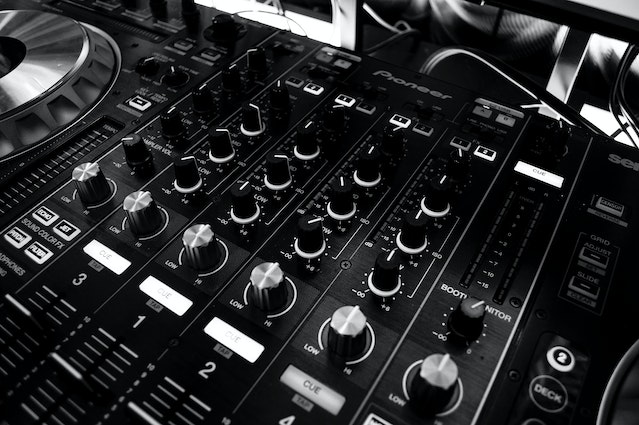
The auditory landscape is on the brink of an evolution that promises to revolutionize our perception of sound. Say hello to the future of audio experiences – the realm of holographic audio. This cutting-edge technology has the power to immerse us in soundscapes that transcend the limitations of conventional audio systems. In this deep dive, we’ll unveil the wonders of holographic audio, exploring its inner workings, the magic of awesome audio, and its potential applications.
A Glimpse into Holographic Audio

Holographic audio, much like its visual counterpart, aims to create a three-dimensional experience for our ears. It transcends traditional stereo sound by adding depth, height, and dimension to the auditory environment. This is achieved by utilizing advanced signal processing algorithms that consider the spatial characteristics of sound waves. Imagine standing in a room with instruments playing all around you – that’s the promise of holographic audio.
Holographic audio systems employ an array of speakers, often combined with psychoacoustic principles, to recreate an immersive soundstage. This technology not only enhances audio quality but also provides a more realistic and captivating listening experience.
The Awesome Audio Experience
Imagine being enveloped by music, as if the sound is coming from every direction, creating a captivating symphony around you. This is the awe-inspiring world of awesome audio, which holographic audio systems excel at delivering. Unlike conventional audio setups that confine sound to a specific direction, holographic audio transports you into a space where sound dances freely around you.
With awesome audio, you can feel the intricate details of a song, as if you’re part of the musical performance. It’s a journey that brings out emotions and nuances you might have missed before. Whether it’s the subtle strumming of a guitar or the delicate rustling of leaves in a movie scene, awesome audio ensures you catch every note, whisper, and breath.
Awesomeness Amplified: Holographic Audio & Tinting
Now, let’s dive deeper into a fascinating application of holographic audio – its synergy with tinting. Tinting, in this context, refers to the art of adding color and emotion to sound. Just as tinting can transform a movie scene’s mood, tinting in audio amplifies the emotional impact of a sound. It’s like painting soundwaves with feelings.
When holographic audio joins forces with tinting, the result is an incredibly rich and emotionally charged auditory experience. Imagine listening to your favorite song with an extra layer of warmth during the chorus or feeling the tension escalate through a podcast as the audio subtly shifts in hue. This combination takes you beyond listening; it lets you feel the essence of the content.
The Mechanics Behind the Magic
Holographic audio isn’t pure magic – it’s science meeting art. Spatial audio algorithms analyze sound waves, considering factors like amplitude, frequency, and phase. This data is then used to position sounds in a three-dimensional space, fooling our ears into perceiving sounds from specific directions.
The setup usually involves an array of speakers or headphones equipped with sensors that detect your head movements. This allows the system to adjust sound positioning in real time as you move, creating a seamless and dynamic audio experience.
From Entertainment to Everyday Life
Holographic audio isn’t limited to entertainment. Its applications stretch far and wide, from enhancing gaming experiences to aiding visually impaired individuals in navigating their surroundings. Imagine using audio cues to intuitively find your way through a new place, or experiencing a virtual tour of a historical site with lifelike audio commentary.
Moreover, holographic audio holds the potential to revolutionize teleconferencing. Instead of a flat audio stream, imagine virtual meetings where participants’ voices emanate from their positions around a virtual table. This could redefine remote collaboration, making it feel more natural and engaging.
Unraveling the Future: Challenges and Opportunities
While the prospects of holographic audio are tantalizing, there are challenges to overcome. The technology requires precise calibration and often a controlled environment to deliver optimal results. Moreover, as it gains traction, content creation needs to adapt to harness its potential fully.
However, the audio industry is rising to the occasion, exploring innovative ways to address these challenges. As more content creators and tech enthusiasts embrace this technology, we can expect a continuous stream of improvements and breakthroughs that push the boundaries of sonic experiences.
Final Words
In the ever-evolving landscape of audio technology, holographic audio stands as a beacon of innovation. Its ability to transport us into immersive soundscapes, coupled with the enchantment of awesome audio and the synergy of tinting, promises a future where we’re not just listeners but active participants in the auditory realm. As this technology unfolds, we find ourselves on the threshold of an era where sound knows no bounds.
Commonly Asked Questions
Q1: How does holographic audio work?
Holographic audio employs advanced algorithms to process sound waves, positioning them in a three-dimensional space. This tricks our ears into perceiving sound from different directions, creating an immersive experience.
Q2: Can I experience holographic audio at home?
Yes, you can. Many companies offer holographic audio systems for personal use. These setups usually involve an array of speakers or headphones that recreate the three-dimensional soundstage.
Q3: What’s the difference between stereo and holographic audio?
Stereo audio offers left-right sound separation, while holographic audio adds depth, height, and dimension. It creates a more immersive and lifelike listening experience.
Q4: Is holographic audio only for entertainment purposes?
No, holographic audio has diverse applications. It can aid visually impaired individuals, enhance teleconferencing experiences, and even improve navigation systems.
Q5: How can content creators leverage holographic audio?
Content creators can explore innovative ways to integrate holographic audio into their projects, enhancing engagement and emotional resonance.












